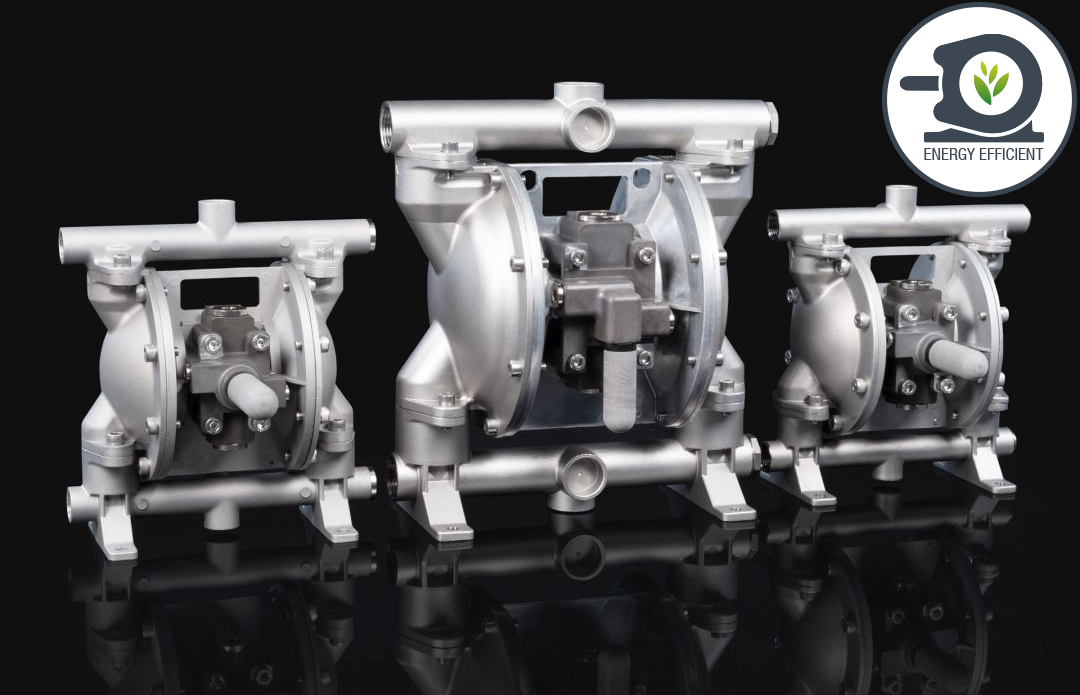compressed air savings
How to save compressed air?
Energy efficiency with Timmer pumps
The ecological footprint and the economical use of resources play a decisive role in industry. Energy efficiency is becoming increasingly important. Pneumatic double diaphragm pumps are increasingly coming into focus due to their efficiency. It quickly becomes clear that the potential of these pumps is far from exhausted.
Compared to conventional solutions, we reduce energy consumption by half with our air-powered pumps. We measured these savings in real processes, as efficiency is highly dependent on factors such as flow rate, back pressure, viscosity of the media and operating pressure.
Sustainability and political changes
The requirements for double diaphragm pumps have changed. In the past, the focus was on process reliability, durability and low pulsation. Today, energy management and sustainability are just as important. Companies are rethinking, also due to political subsidies and legal requirements for energy efficiency and CO2 reduction. Our fluid pumps offer real added value here. Because sustainability and energy efficiency through compressed air saving are central aspects for us. Our pumps are designed to work reliably, have a high degree of efficiency and low pulsation. With our expertise and innovative solutions, we help companies to improve their energy efficiency and contribute to sustainability.
Efficiency Comparison: Pneumatic vs. Electric Pumps
Some users rely on electric pumps as an alternative. A direct comparison
of the efficiency of the pumps is difficult because the framework
conditions are decisive. Nevertheless, some general statements can be
made.
When pumping small quantities at high pressures of up to 6
bar, pneumatic double diaphragm pumps are often more efficient than
centrifugal pumps. Turbomachinery is better suited for easy-flowing
media such as water, while viscous media such as pastes or paints are
best conveyed with compressed air-powered positive displacement pumps.
Our pumps are versatile, which makes them particularly attractive for
industries such as chemicals, pharmaceuticals and paint and coatings
production.

Thanks to an efficient pneumatic valve and optimized geometry, the Timmer pumps are particularly energy-efficient.
Instead of a cylindrical control valve with several O-rings, we rely on a ceramic slide valve. This minimizes wear and ensures precise and efficient switching.
The small deflection of the diaphragms reduces material stress and significantly extends the service life.

Proven valve technology enables high energy savings!

What does compressed air cost?
The industry used to assume a cost of €0.03/m³ of compressed air produced.
Today, compressor manufacturers calculate between €0.04 and €0.08 per m³ of compressed air.
The
ecological footprint and the economical use of resources play a
decisive role in industry. The topic of energy efficiency is becoming
increasingly important. 'We can usually reduce energy consumption by
half compared to conventional solutions,' says Engels.


Summary
Compressed air is one of the most expensive forms of energy, mainly due
to the high cost of electricity to generate it. Inefficiencies such as
leaks, unused heat, ineffective equipment, and poor control further
increase costs. Although the air itself costs nothing, the electrical
energy required is about four times as expensive as gas or oil. The
price of compressed air today is between €0.04 and €0.08 per m³. With
pumps from Timmer, costs can be reduced considerably.









